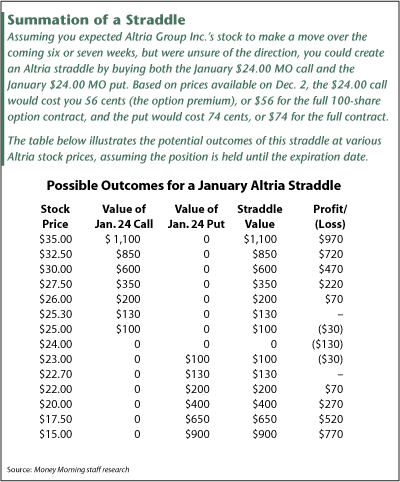It's often said that the only thing certain in the stock market is uncertainty - and that's certainly been the case this fall.
Since 1950, September has consistently been the worst month for stock performance and October is most notable for the market crashes it has seen - 1929 and 1987, to name two. This year, however, the Dow Jones Industrial Average broke out of a summer slump and gained 11.08% over those two months, with similar percentage gains by the other major indexes. Then, in November, the Dow and other broad indexes lost more than 1%, only to rebound by more than 2% each on Dec. 1 in a 250-point Dow rally inspired by a better-than-expected November jobs report.
What will happen next?
Will Wednesday's surge turn into a legitimate Santa Claus rally, followed by a strong January Effect advance? Or, will poorer economic numbers and a wave of tax-related selling send the market reeling as fall winners cash in their gains and summer losers shed their poor performers?
No one can provide the answer with 100% assurance - but that doesn't mean you can't profit from the market, regardless of which scenario proves correct. The solution involves using options on your favorite stocks or indexes in a strategy known as a "straddle."

Though it sounds exotic, structuring a straddle is really quite simple. All you do is simultaneously buy both an at-the-money call option and an at-the-money put option on the same stock or index -- at the money meaning the striking prices of the options are the ones closest to the actual trading price of the underlying security.
For example, with Altria Group Inc. (NYSE: MO) trading at $24.11 a share, as it was on Dec. 2, the at-the-money call would be the one with a $24.00 striking price. The at-the-money put would also be the one with a $24.00 striking price.
Assuming you expected Altria's stock to make a move over the coming six or seven weeks, but were unsure of the direction, you would create an Altria straddle by buying both the January $24.00 MO call and the January $24.00 MO put. Based on prices available on Dec. 2, the $24.00 call would cost you 56 cents (the option premium), or $56 for the full 100-share option contract, and the put would cost 74 cents, or $74 for the full contract.
The entire straddle would thus cost $1.30 a share, or $130 total, and would have these features:
- If Altria stock closed at exactly $24.00 per share on the option expiration date (January 22, 2011), you would lose the entire $130 you paid for the position. (This is rare, as is a total loss on a straddle position.)
- If Altria stock closed between $22.70 (the striking price minus the total premiums paid) and $25.30 (the strike price plus the total premiums paid), you would suffer a partial loss.
- At any Altria stock price above $25.30 or below $22.70, your straddle would produce a profit - and the further Altria went outside that range, the larger the profit would be.
In summary, then, the theory behind a straddle is that, if the underlying stock makes a large move in either direction, the gain on the winning option will more than offset the loss on the losing option, giving you a profit on the overall trade.
The table below illustrates the potential outcomes of this straddle at various Altria stock prices, assuming the position is held until the expiration date.

Straddles can be used with any stock or index on which options trade, but the profit/loss scenario can vary substantially from stock to stock, depending on several factors, most important being the time remaining until the expiration of the options used and the price range and volatility of the underlying security.
For example, with Altria, a straddle using March $24.00 puts and calls rather than the January ones cited above would have cost $218 instead of just $130 - meaning Altria would have to climb above $26.18 or fall below $21.82 by expiration for the trade to be profitable. That's still possible, although quite a bit less likely given Altria's 52-week trading range of $19.12 to $26.22.
Similarly, a January straddle on U.S. Steel Corp. (NYSE: X) - a much more volatile stock than Altria - would have cost a whopping $640 had it been initiated on Dec. 2. With U.S. Steel trading at $50.30, the premium on the at-the-money January $50.00 call was $3.35 ($335 for the full contract), while the quote for the January $50 put was $3.05 ($305).
Given those numbers, U.S. Steel's stock would have to climb above $56.40 or fall below $43.60 by Jan. 22, 2011 for the trade to become profitable. While that may seem unlikely, it's actually quite possible given U.S. Steel's 52-week range of $36.93 to $70.95 and the fact that it frequently makes daily moves of $1.50 to $2.00 per share.
Nonetheless, the straddle strategy is usually best suited for highly uncertain or extremely erratic market environments, and you should always carefully consider the past trading range and recent volatility of the underlying security to ensure the straddle profit targets are reasonable.
A cheaper variation of the straddle offering slightly smaller profits - a strategy known as a "strangle" - can also be used in volatile markets, and it will be detailed in a future Money Morning article. The potential offered in selling both straddles and strangles will also be covered in the future, though those plays are generally suitable only in more stable markets than the one we've experienced recently.
News and Related Story Links:
- Money Morning:
Official Web site - Level 2 Quotes:
The Best and Worst Months for Stocks - Wikipedia:
Santa Claus rally - Wikipedia:
January Effect - Investopedia:
Selling Losing Securities for a Tax Advantage - Investopedia:
Option straddle definition - Investopedia:
Call option definition - Investopedia:
Put option definition - Investopedia:
At-the-money option definition - Investopedia:
Strike price definition - Investopedia:
Underlying security definition - Investopedia:
Expiration date definition - Investopedia:
Option premium definition - Wikipedia:
Encyclopedia Entry: Strangle (options) - Money Morning Defensive Investing Series:
Defensive Investing Series Stories - Money Morning Defensive Investing Series:
Defensive Investing: A Stock-Option "Insurance Policy" That Can Protect Your Profits - Money Morning Defensive Investing Series:
Defensive Investing: Covered Calls Increase Cash Flow, Up Protection - Money Morning Defensive Investing Series:
Defensive Investing: Defeat Market Volatility With an Options-Straddle Strategy - Money Morning Options Strategies Story:
Investing Strategies: How to Decode the New Options Trading Symbols - Money Morning Options Strategies Story:
Three Ways to Play the Silver Rally - While Limiting Your Risk with Options - Amazon.com:
"Commodity Options: Spectacular Profits With Limited Risk," by Larry D. Spears - Money Morning News Archive:
How to Use Stock Options to Insure Your Holdings Against Short-Term Pullbacks - Money Morning News Archive:
With This Options Strategy, Investors Can Snap Up Global Stocks at Discount Prices - Yahoo! Finance:
Options Center home page


